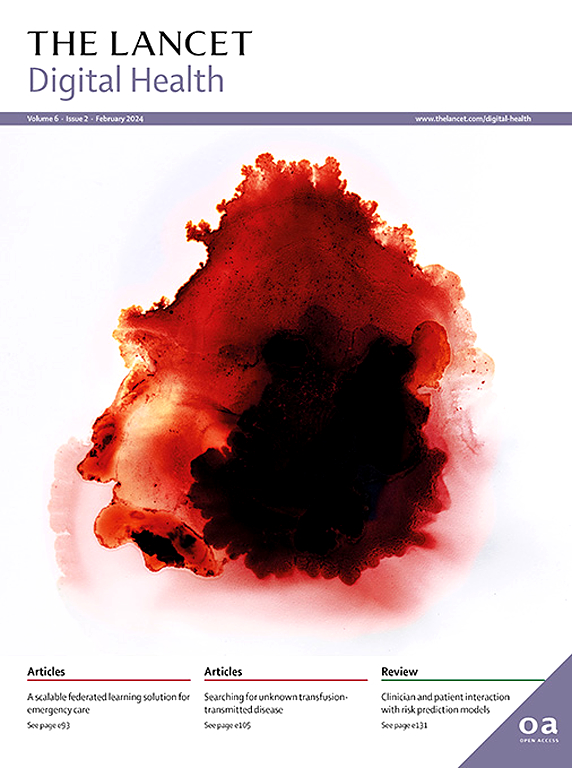大型语言模型改变心血管医学的潜力。
IF 23.8
1区 医学
Q1 MEDICAL INFORMATICS
引用次数: 0
摘要
心血管疾病一直是全球死亡的主要原因,其早期检测和预测仍然是一项重大挑战。人工智能(AI)工具可以帮助应对这一挑战,因为它们在早期诊断和预测这些疾病的发生方面具有相当大的潜力。深度神经网络可以提高医学图像解读的准确性,其输出结果可以提供丰富的信息,否则心脏病专家将无法检测到这些信息。随着变压器模型、多模态人工智能和大型语言模型的最新进展,将电子健康记录数据与图像、基因组学、生物传感器和其他数据进行整合的能力有望改善诊断,并将高风险患者分区,以采取初级预防策略。虽然人工智能的重点是为临床医生提供支持,但人工智能也可以为患者服务,为诊断(如心律失常)提供即时帮助,目前正在研究自动自我成像。在用于临床实践之前,应解决潜在的风险,如数据隐私的丢失或潜在的诊断错误。本系列论文探讨了心血管医学人工智能模型的机遇和局限性,旨在找出应用人工智能模型的具体障碍和解决方案,促进人工智能模型与医疗保健系统的整合。本文章由计算机程序翻译,如有差异,请以英文原文为准。
The potential for large language models to transform cardiovascular medicine
Cardiovascular diseases persist as the leading cause of death globally and their early detection and prediction remain a major challenge. Artificial intelligence (AI) tools can help meet this challenge as they have considerable potential for early diagnosis and prediction of occurrence of these diseases. Deep neural networks can improve the accuracy of medical image interpretation and their outputs can provide rich information that otherwise would not be detected by cardiologists. With recent advances in transformer models, multimodal AI, and large language models, the ability to integrate electronic health record data with images, genomics, biosensors, and other data has the potential to improve diagnosis and partition patients who are at high risk for primary preventive strategies. Although much emphasis has been placed on AI supporting clinicians, AI can also serve patients and provide immediate help with diagnosis, such as that of arrhythmia, and is being studied for automated self-imaging. Potential risks, such as loss of data privacy or potential diagnostic errors, should be addressed before use in clinical practice. This Series paper explores opportunities and limitations of AI models for cardiovascular medicine, and aims to identify specific barriers to and solutions in the application of AI models, facilitating their integration into health-care systems.
求助全文
通过发布文献求助,成功后即可免费获取论文全文。
去求助
来源期刊

Lancet Digital Health
Multiple-
CiteScore
41.20
自引率
1.60%
发文量
232
审稿时长
13 weeks
期刊介绍:
The Lancet Digital Health publishes important, innovative, and practice-changing research on any topic connected with digital technology in clinical medicine, public health, and global health.
The journal’s open access content crosses subject boundaries, building bridges between health professionals and researchers.By bringing together the most important advances in this multidisciplinary field,The Lancet Digital Health is the most prominent publishing venue in digital health.
We publish a range of content types including Articles,Review, Comment, and Correspondence, contributing to promoting digital technologies in health practice worldwide.
 求助内容:
求助内容: 应助结果提醒方式:
应助结果提醒方式:


